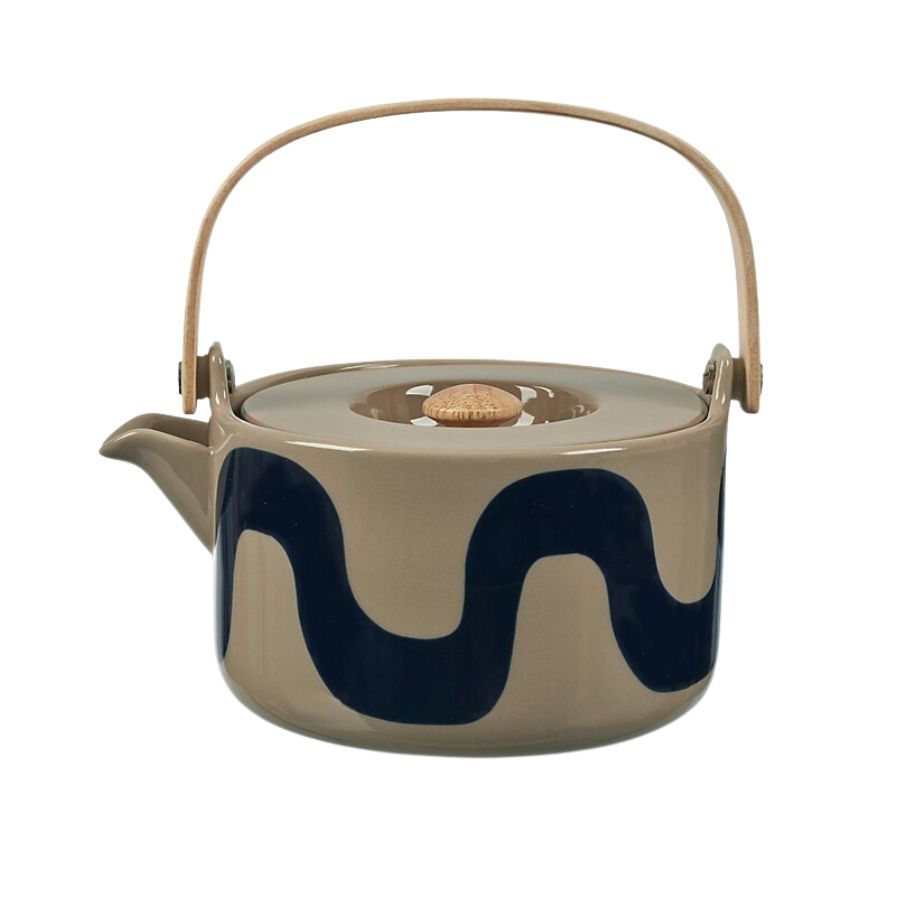5 Things Japandi Designers do in Their Kitchens That Make Them Minimalist and Serene
Take your design cues from the Japandi designers with these top style pointers for a calming Japandi-style kitchen

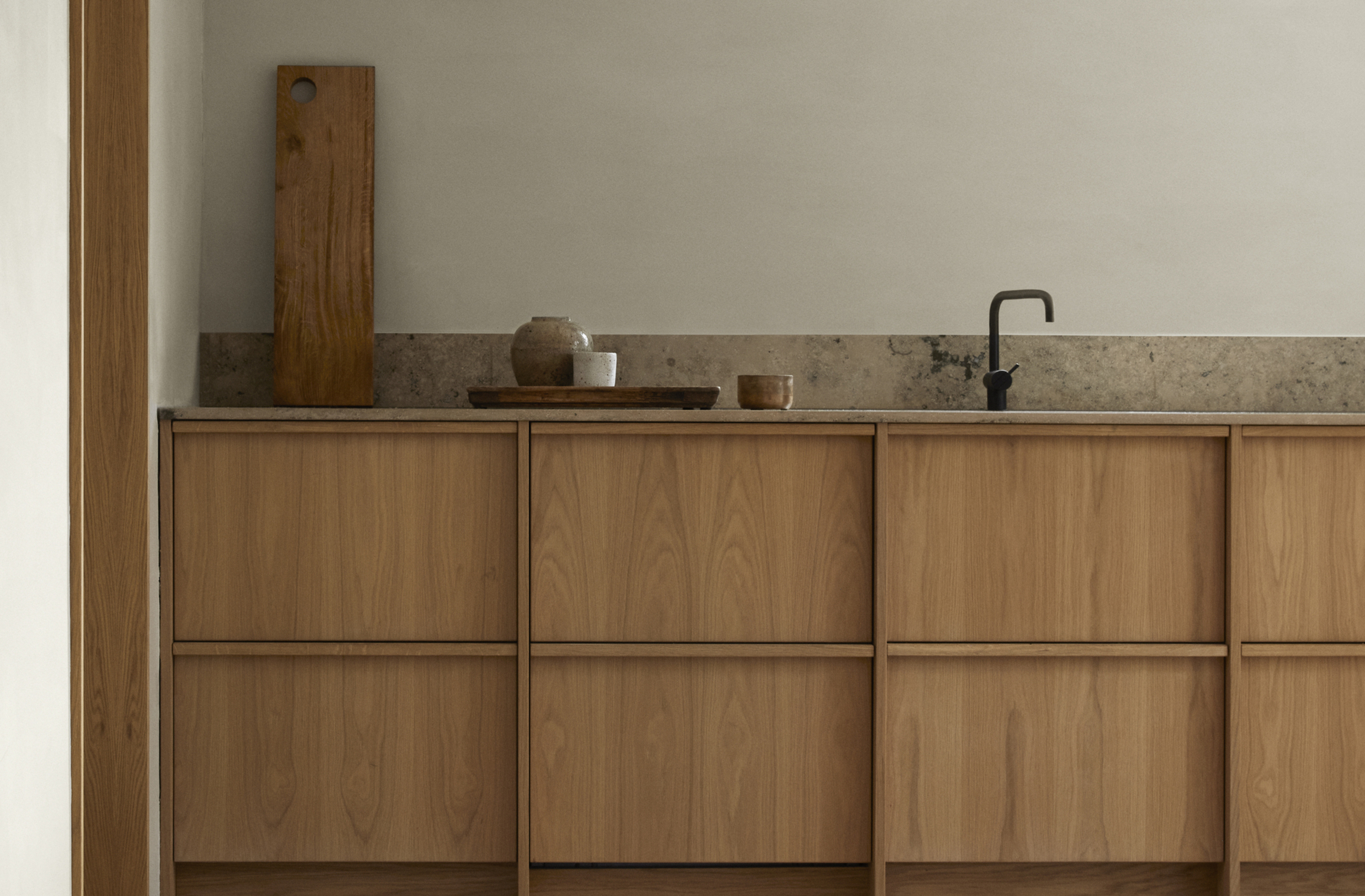
Japandi-style interior design is a clever blend of two distinct aesthetics, carving out a whole separate genre by incorporating elements of Japan's rich cultural style and the Scandi love for clean lines and minimal design.
'One of the most important similarities between both styles is nature,' says Laila Rietbergen, author of Japandi Living.
'In both Japan and Scandinavia they love to spend time in nature and bring nature into their home. This resonates not only by using natural materials like wood and linen but also with organic shapes. Where in Japanese interiors you will find more darker colors and wood in Scandinavian design, you will find more light wood and soft and brighter pops of color. This combined makes an interesting space with different use of natural materials, shapes and contrast. 'There is a common love for craftsmanship from both sides and this is seen in Japandi style interiors,' says Laila.
The two looks are remarkably similar so it makes sense to combine the two styles (particularly when the names blend so easily for a term that rolls off the tongue!) In the kitchen, the Japandi style makes a space feel calming and elegant. From natural materials, a calming and neutral color palette, and a clean and simple design, it creates a relaxed vibe in a room that can often feel busy and high-paced.
So how exactly do the designers create the look? We've spoken to our favorites who say that these five pillars are central to creating a Japandi aesthetic in the modern kitchen.
1. Use neutral colors

The Japandi color palette is the perfect blend of Japanese and Scandi styles, favoring muted, earthy and shades that call to nature. From a spectrum of beige and tans, to softer off-whites and punctuated with dark black accents, a neutral color scheme can feel calming and serene. Pops of greens might play a role in a Japandi kitchen, typically brought in through natural plants that add visual interest and freshness to the space.
'A muted color palette is something that defines both Japanese and Scandinavian interiors,' explains Jonas Bjerre-Poulsen, founder of Copenhagen’s Norm Architects Norm Architects. 'We believe that the most important thing in a Japandi kitchen is that it extracts the colors from nature and what is inherent or occurs naturally in the materials in use.'
The Livingetc newsletters are your inside source for what’s shaping interiors now - and what’s next. Discover trend forecasts, smart style ideas, and curated shopping inspiration that brings design to life. Subscribe today and stay ahead of the curve.
2. Incorporate functional and beautiful lighting
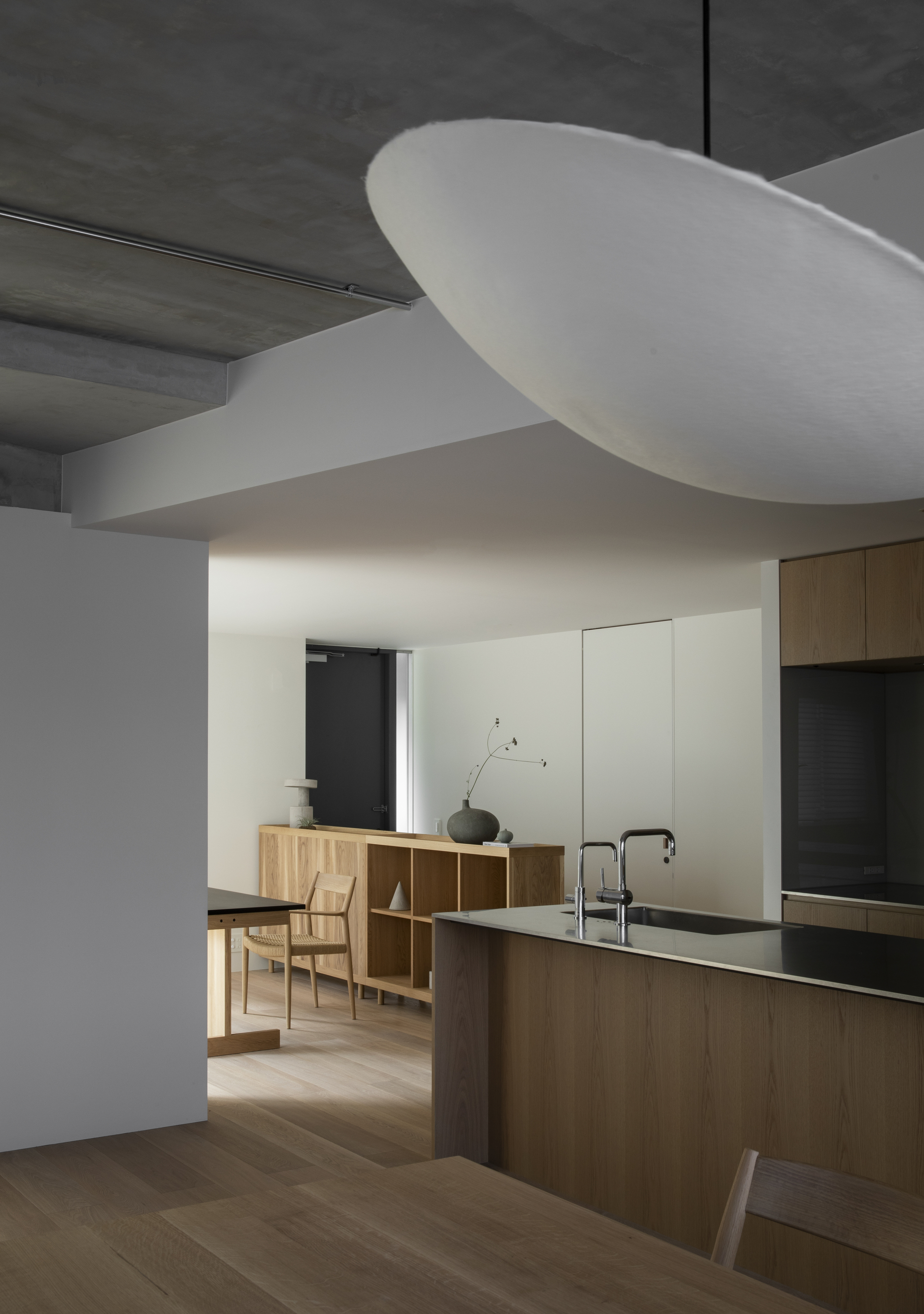
Embrace the Japandi style with functional and beautiful kitchen lighting. 'Personally, I think the purpose of light is to add ambiance to a room and create a relaxing atmosphere,' says Laila Rietbergen, Japandi enthusiast, founder of the Instagram account @japandi.interior and author of Japandi Living. 'Japandi lighting is functional, beautiful and sculptural without being overwhelming. Subtleness is key.'
Japandi lighting is typically warm and diffused light that mimics the light of a lantern. 'Good artificial light consists of three fundamental elements, with which you can achieve the perfect balance between style and comfort: decorative lighting, task lighting and accent lighting.'
3. Bring in the warmth of wood
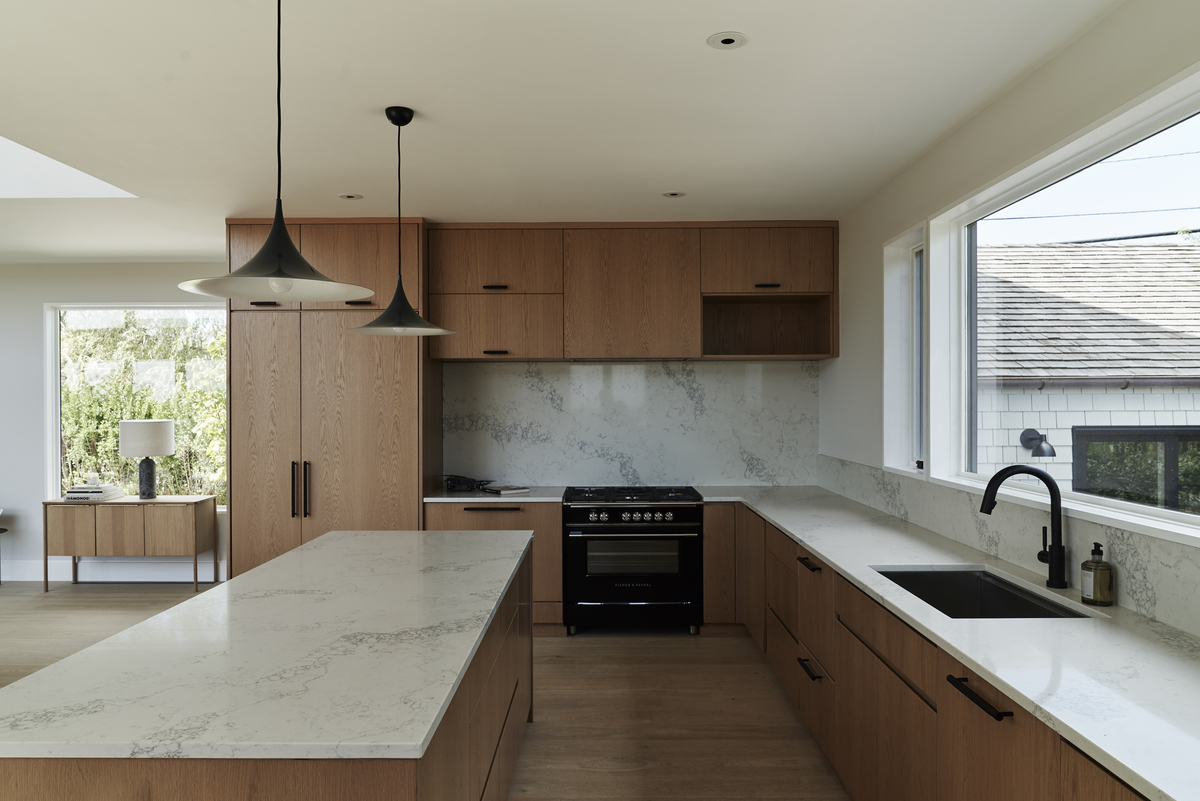
The use of natural materials is a defining characteristic of Japandi style and specifically the use of wood with its warm and organic qualities. From flooring to cabinetry to countertops, accoya wood and white oak both make for good options with their pale coloring and natural grain.
For Laila, incorporating wood calls to the Japandi shared love of nature. 'One of the most important similarities between both styles is nature. In both Japan and Scandinavia they love to spend time in nature and bring nature into their home,' says Laila. 'This resonates not only by using natural materials like wood and linen but also with organic shapes.'
Enhance the wood kitchen look with complementary materials like rattan and bamboo for a textured feel. This example by Studio Zung features a Scandinavian-inspired chef’s kitchen heavily clad in wood with a distinctive grain that gives it a subtle pattern.
4. Focus on functionality
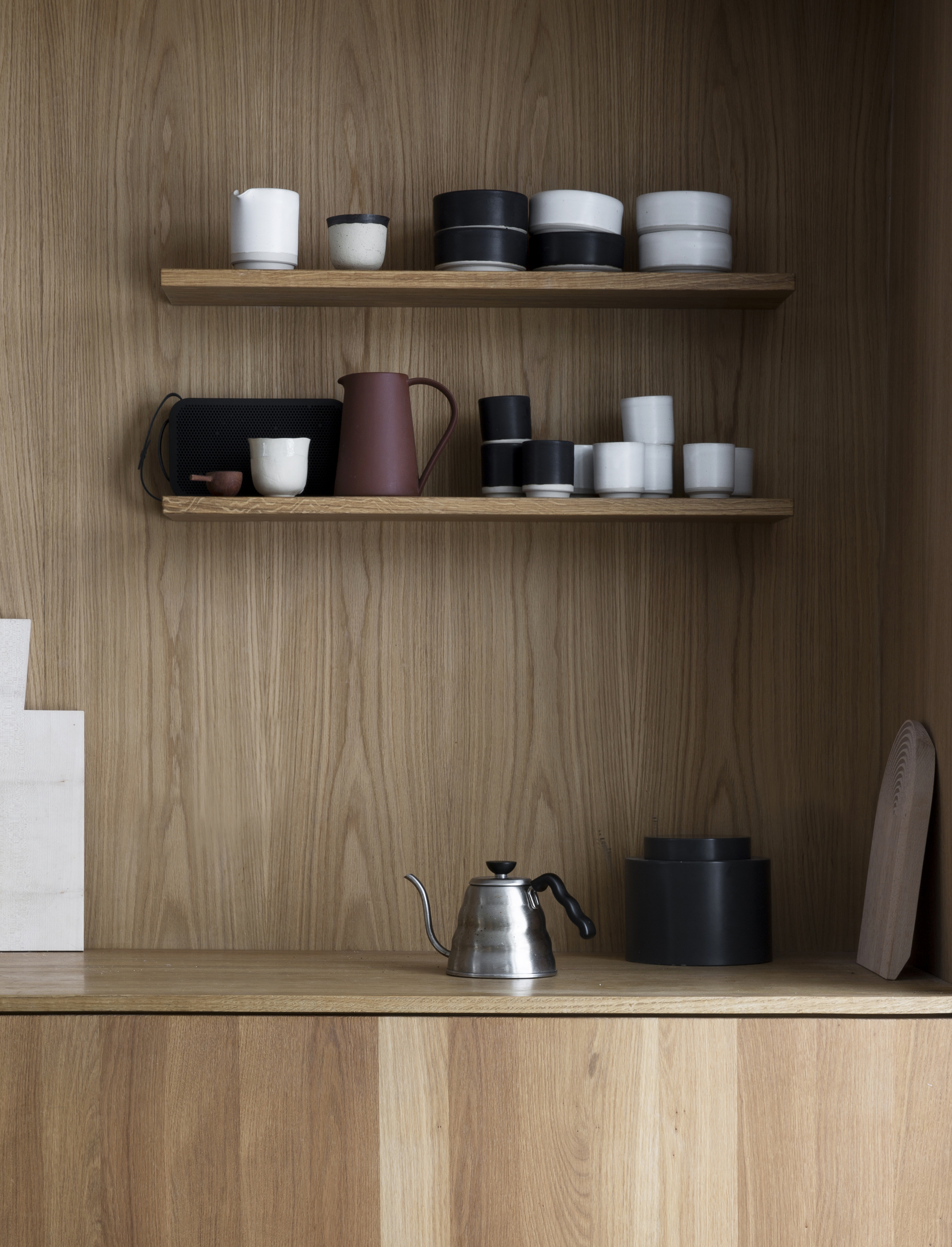
Think about the functionality of the space. To create a seamless aesthetic, efficient kitchen storage is key. For Keiji, cooking is an essential part of Japanese culture. 'There are more types of tableware and knives, the likes of rice cookers and earthen pots for Japanese cooking than for Western cooking. Therefore, a lot of storage is needed to put away dishes,' says Keiji Ashizawa, architect and product designer of Keiji Ashizawa Design.
'Japandi kitchens require enough storage so you don’t have to place too much stuff on the countertop. But there is definitely “room” to place some items “for display”,' says Laila.
Think about the cabinetry too. you want a cabinet that feels sleek and minimalist. Opt for clean lines, and unadorned surfaces and stay clear of the Shaker style. Instead, simple wooden cupboards work wonders, and handleless cabinets will enhance that streamlined look without any interference from hardware that can contribute to visual clutter.
5. Consider functional decor

Bring the Japandi look to your kitchen with decorative pieces that show craftsmanship and thoughtful design. 'In Japandi interiors, especially in Japanese interiors, almost all decorations have a purpose,' explains Laila. 'They are functional items, like ceramic cups, a teapot or books.'
'I love the idea of investing in items like an elegant knife block, a reclaimed wood cutting board,' adds interior designer Kathy Kuo, 'or shibori patterned dish towels, and hand-made pottery to get that Japandi look that's equal parts cozy and minimal.'
In this kitchen by Brooklyn-based Studio Orb, the kitchen has been designed to showcase functional decor. 'This kitchen shelf is decorated with works of art that showcase Japanese craftsmanship and more void space was created to allow Japanese craft accessories to stand out,' explains Kiyomi Tanigawa, creative director of Brooklyn Misomaru and Studio Orb. 'In this example, the accessories are made with Japanese earthenware, cutting boards, and wooden utensils.'
3 decorative buys for a Japandi style kitchen

Former content editor at Livingetc.com, Oonagh is an expert at spotting the interior trends that are making waves in the design world. She has written a mix of everything from home tours to news, long-form features to design idea pieces, as well as having frequently been featured in the monthly print magazine. She is the go-to for design advice in the home. Previously, she worked on a London property title, producing long-read interiors features, style pages and conducting interviews with a range of famous faces from the UK interiors scene, from Kit Kemp to Robert Kime. In doing so, she has developed a keen interest in London's historical architecture and the city's distinct tastemakers paving the way in the world of interiors.
